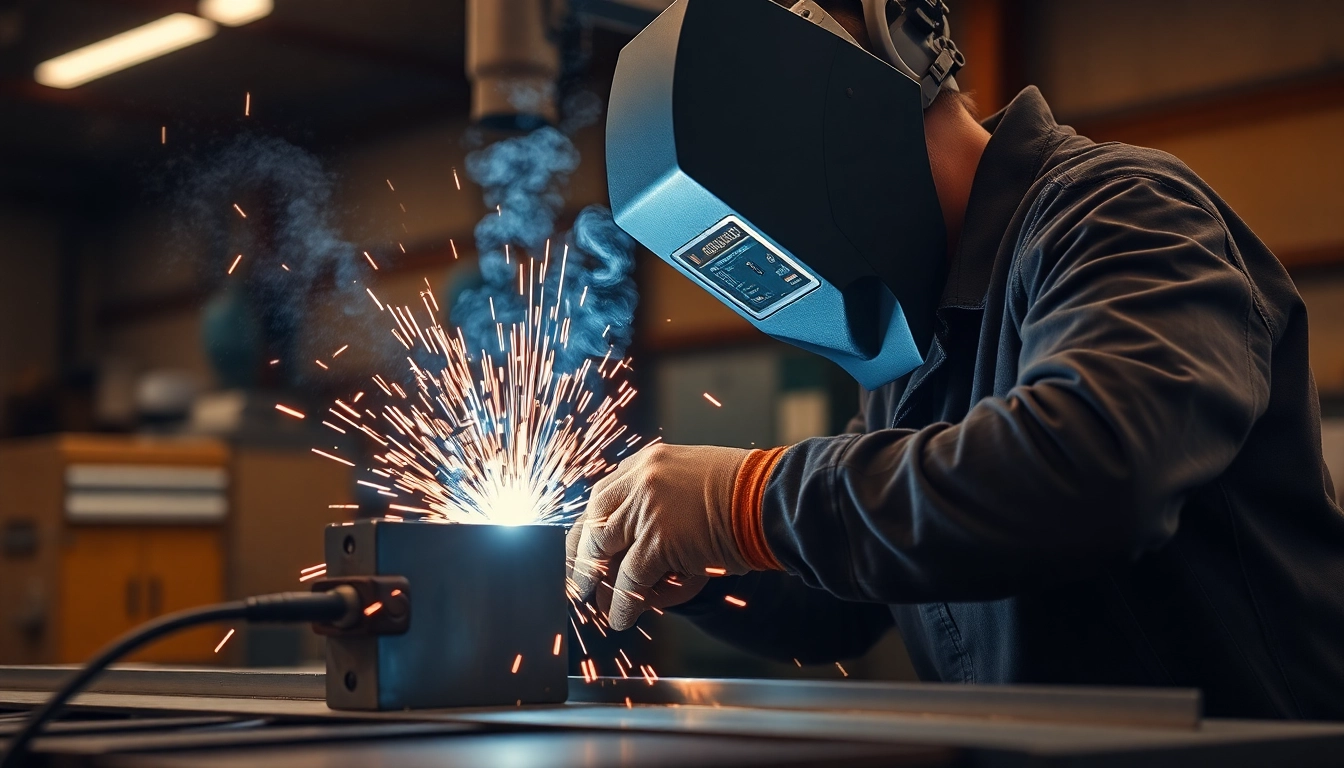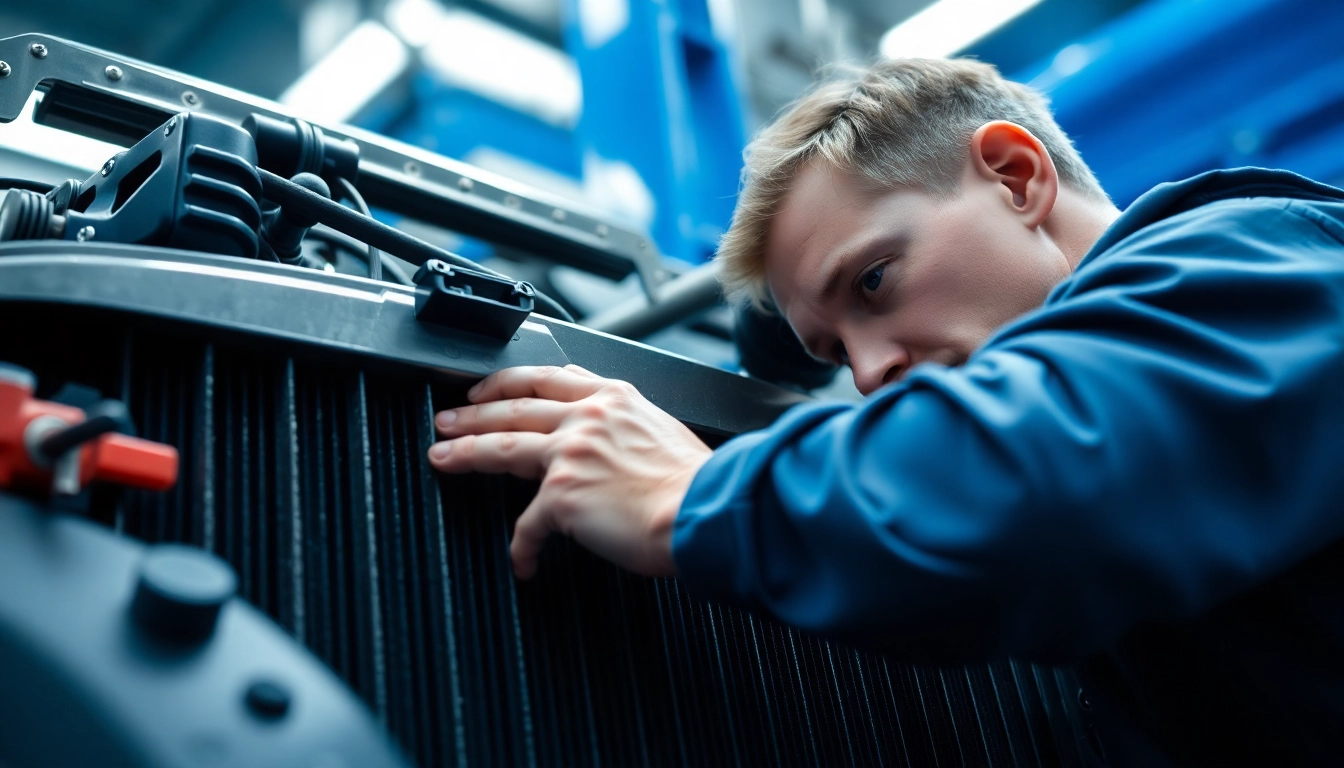Understanding AC DC TIG Welders
In the realm of welding, one of the most sophisticated processes is TIG (Tungsten Inert Gas) welding, known for its capability to produce high-quality joints in various materials. A prominent variation of this process is the ac dc tig welder, distinguished by its ability to operate on both alternating current (AC) and direct current (DC). This dual functionality opens the door to enhanced versatility, allowing welders to tackle a wider array of materials, including aluminum and stainless steel, making these machines invaluable in both industrial and hobbyist settings.
What is an AC DC TIG Welder?
An AC DC TIG welder is a specialized machine that uses tungsten electrodes and a shielding gas (usually argon) to create high-quality welds. The key differentiator of an AC DC welder is the use of alternating current for aluminum welding and direct current for ferrous metals such as steel. The ability to switch between AC and DC allows welders to customize their approach based on the material and thickness of the metal being joined.
AC is particularly effective for welding non-ferrous metals, enabling a clean and precise arc that helps in penetrating and welding materials like aluminum. On the other hand, DC welding provides better control and stability, making it ideal for iron and stainless steel applications.
Key Features of AC DC TIG Welders
- Dual Voltage Capability: The ability to work with both AC and DC currents allows for versatility in material handling.
- Precision Control: AC DC TIG welders offer enhanced control over the arc, which can be fine-tuned for different metals and welding positions.
- High-Quality Welds: These welders produce high-quality, clean, and aesthetically pleasing welds, which is crucial in applications where appearance matters.
- Variable Settings: Most AC DC TIG welders come with adjustable settings for amperage, allowing welders to dictate heat input precisely.
- Advanced Features: Many models include features such as pulse welding, which helps manage heat and improves the quality of the weld.
Applications of AC DC TIG Welding
AC DC TIG welding is widely used across various industries. Its applications include:
- Aerospace: The aviation industry relies on TIG welding for its ability to produce strong, precise welds critical for safety.
- Automotive: TIG welding is popular in automotive repair and custom builds for its clean finish and weld quality.
- Fabrication: Industrial fabrication shops use TIG welding for creating parts and machinery that require strength and accuracy.
- Art and Sculpture: Artists and sculptors utilize TIG welding to achieve detailed work with metals.
- Marine: In shipbuilding and repair, the ability to weld aluminum and stainless steel effectively is essential, making AC DC TIG welders vital tools.
Benefits of Using AC DC TIG Welders
Versatility Across Various Metals
The primary advantage of an AC DC TIG welder is its versatility. Most welders are trained to use different technologies depending on their projects, but with an AC DC welder, they can easily switch between DC for steel and AC for aluminum. This functionality is particularly beneficial in fabrication shops where multiple types of metals need to be welded routinely, thus eliminating the need for multiple machines and optimizing space and costs.
Enhanced Control Over Welding
AC DC TIG welders allow for exceptional control over the welding process. Welding parameters can be finely tuned to accommodate the specific requirements of both the base material and the task at hand. This precision is critical in industries where weld integrity is of paramount importance, ensuring that joints are both consistent and reliable.
Improved Weld Quality and Aesthetics
With their ability to produce clean and precise welds, AC DC TIG welders are prized for their aesthetic capabilities. This is particularly important in applications where the visual aspect of the weld is as important as its structural functionality. The absence of spatter, a common issue in other welding methods, further enhances the appearance of the welds made with TIG welding.
Choosing the Right AC DC TIG Welder
Key Specifications to Consider
When selecting an AC DC TIG welder, several specifications should be carefully evaluated:
- Welding Amperage: Higher amperage machines can weld thicker materials and provide faster weld speeds.
- Duty Cycle: This specifies how long the machine can operate continuously before it needs to cool down. A higher duty cycle is better for heavy, continuous work.
- Portability: For those who work in different locations, the weight and ease of transport should be considered.
- Control Features: Look for features such as foot pedals for adjusting amperage remotely and digital displays for precise settings.
- Warranty and Support: A good warranty can save on repairs in the long run and indicates manufacturer confidence in their product.
Top Brands in the Market
Many reputable brands manufacture AC DC TIG welders, each offering unique features and specifications:
- Miller Electric: A leader in the industry known for durable, high-performance welders.
- Linde/ESAB: Offers a range of models with impressive features catering to various welding needs.
- Lincoln Electric: Known for reliability and innovation with multiple options available for different needs.
- Everlast: Provides high-quality welders at competitive prices, appealing to both professional and hobbyist welders.
- PrimeWeld: Gaining attention for its effective, cost-efficient machines that cater to multiple welding requirements.
Price Ranges and Budgeting
When budgeting for an AC DC TIG welder, it’s important to consider various price points:
- Entry-Level Welders: Typically priced between $300 to $800, suitable for hobbyists and light-duty work.
- Mid-Range Welders: Ranging from $800 to $2,000, these machines usually offer greater features and higher performance capabilities.
- Professional Grade Welders: Above $2,000, these models are designed for continuous use in industrial settings, with advanced features and higher durability.
It’s also wise to evaluate additional costs such as gas, tungsten electrodes, and other consumables that come with TIG welding.
Common Challenges in TIG Welding
Control and Technique Issues
TIG welding requires a steady hand and precise technique, which can pose challenges, especially for new users. Maintaining a consistent arc length is crucial, as fluctuations can lead to imperfect welds. Continuous practice, coupled with the use of training resources and feedback from experienced welders, can help improve proficiency over time.
Material Compatibility Concerns
Not all TIG welders perform equally across different materials. For example, while a machine may excel at welding aluminum, it might not yield optimal results with thin stainless steel. Understanding the machine’s specifications and adjusting settings accordingly is vital to prevent issues such as warping or burn-through, especially on thinner materials.
Maintenance of TIG Welders
Periodic maintenance is essential to ensure the longevity and efficiency of any welding machine. This includes regular cleaning of the torch, checking gas lines, and ensuring that electrical connections are secure. Failure to maintain equipment can lead to performance problems and increase the likelihood of equipment failure.
Tips for Maximizing Your AC DC TIG Welding Experience
Best Practices for Setup and Technique
To achieve the best results with your AC DC TIG welder:
- Use Quality Consumables: Always choose high-quality tungsten electrodes and filler materials to ensure the integrity of the weld.
- Practice Different Techniques: Engage in experimentation with various techniques such as pulse welding to find the best method for your specific project.
- Optimize Your Settings: Refer to your machine’s manual for optimal settings concerning the materials being welded.
- Maintain a Clean Work Area: Ensure surfaces are clean and free of contamination, as this will greatly affect weld quality.
How to Maintain Your Welder
Proper maintenance can extend the life of your AC DC TIG welder:
- Regular Cleaning: Clean the torch and replace worn parts as needed.
- Inspection: Regularly inspect cables, connections, and other components for wear and tear.
- Cooling System Maintenance: Ensure that cooling systems are functioning correctly to prevent overheating issues during operation.
Further Resources and Learning Opportunities
Continuing education plays a significant role in improving welding skills:
- Welding Courses: Enroll in classes specific to TIG welding.
- YouTube Tutorials: Leverage easily accessible video resources for visual learning and technique demonstration.
- Online Forums and Communities: Engage with fellow welders for advice, tips, and troubleshooting support.


